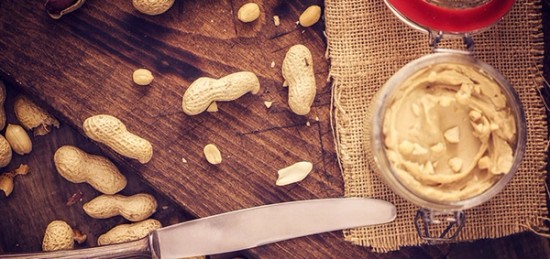A study, published in early June 2015 in the International Journal of Epidemiology and reported in media outlets coast to coast, suggested a correlation that adults who ate at least 10 grams of nuts – or about 15 peanuts – each day were at lower risk for death overall and for death caused by diabetes, cancer and other diseases of the brain, lungs and heart. The analyzed data was from more than 120,000 men and women aged 55-69 years old who participated in the Netherlands Cohort Study. Limitations of the study include the possibility that other factors that weren’t measured may have impacted the results.
This research is just one more in a steady (and growing) drumbeat of good news for peanut lovers everywhere.
What the researchers also said is they didn’t find the same association in this particular study for peanut butter – hence a number of headlines that gave some people the impression that peanut butter may be “less than” its unground sibling.
Nothing could be further from the truth. And here are just a few other studies that suggest it.
Peanut butter is nutrient-dense, which means it provides good fats, 7 grams of protein and 2 grams of fiber. Noted Harvard epidemiologist Walter Willett is a fan, saying that “peanut butter also gives you some fiber, some vitamins and minerals (including 200 milligrams of potassium), and other nutrients.” You can read more from Dr. Willett and Harvard here.
For those watching their weight, peanut butter is a satisfying food that can help maintain a healthy weight or weight loss. A study reported in Nature followed a group of 101 overweight men and women for 18 months. The group was randomized to calorie-controlled diets that were either moderate fat (35%) or low fat (20%). The results suggested that a moderate-fat diet, which included peanuts and peanut butter resulted in weight loss without the participants reporting feelings of hunger. Limitations of the study included its relatively small sample size and the lack of success in obtaining follow-up measurements of all dropouts. Fewer participants dropped out of the moderate-fat diet as compared to the low-fat diet.
And diabetes: a Journal of the American Medical Association study of 83,818 women in the Nurses’ Health Study showed an inverse relationship between eating peanuts and peanut butter and the development of diabetes. The largest difference was seen among participants who ate nuts or peanut butter five times per week, as compared to those who never or almost never ate peanut butter, with the greatest positive association going to peanut butter eaters. Limitations of this study included residual confounding by body weight.
Peanut butter manufactured in the United States must contain at least 90% peanuts, zero trans fats and minimal other ingredients. It’s unclear what type of peanut butter was used in the Netherlands study.
So, whether you love your daily dose of peanutty flavor in solid or ground form, you can count on peanuts to provide 30 vitamins and minerals, including 7 grams of protein and good fats. For more information about peanut and peanut butter nutrition, visit www.nationalpeanutboard.org/nutrition.
